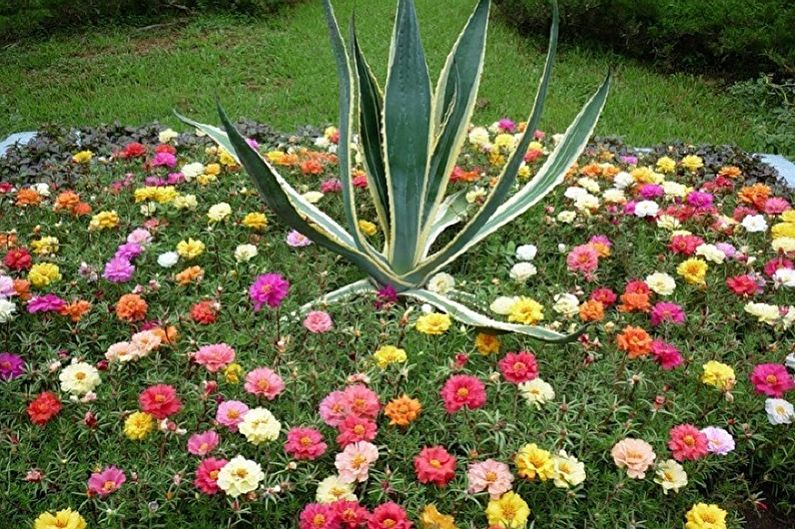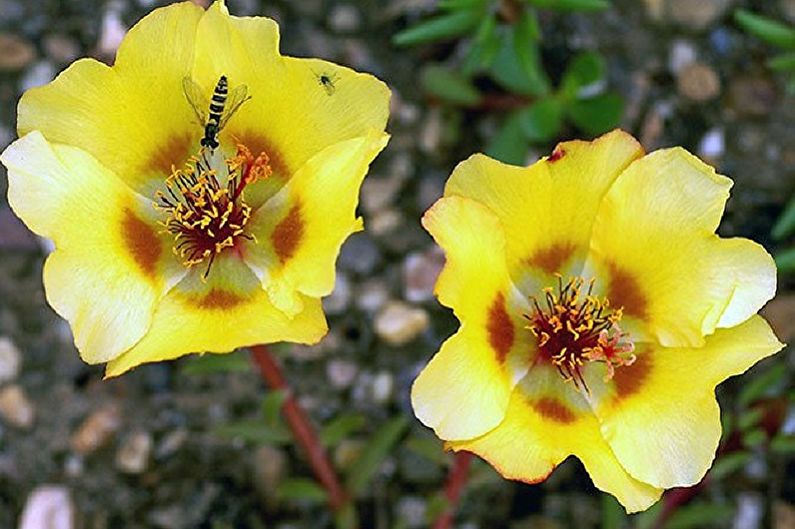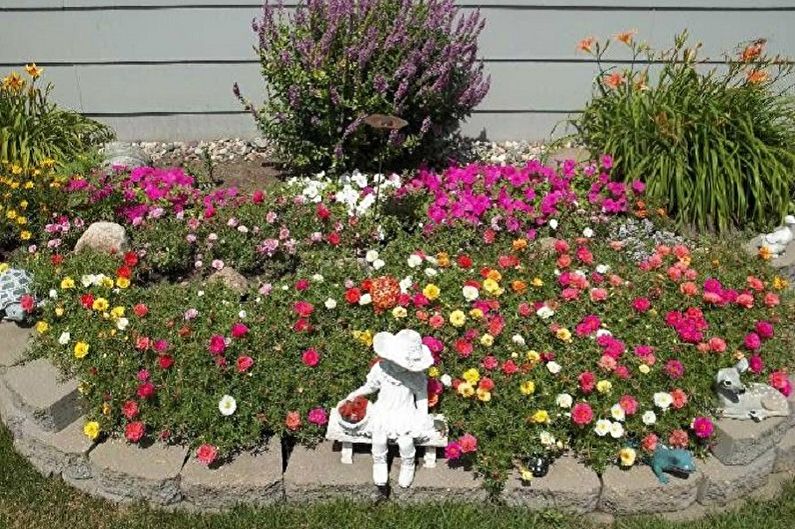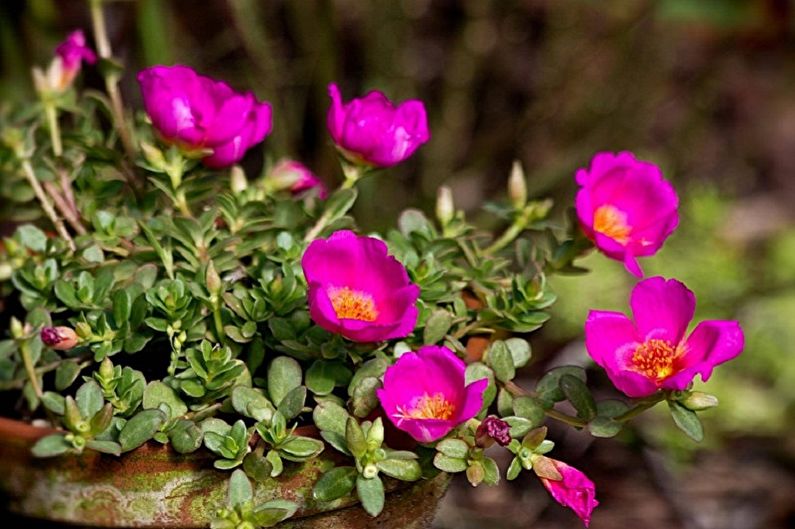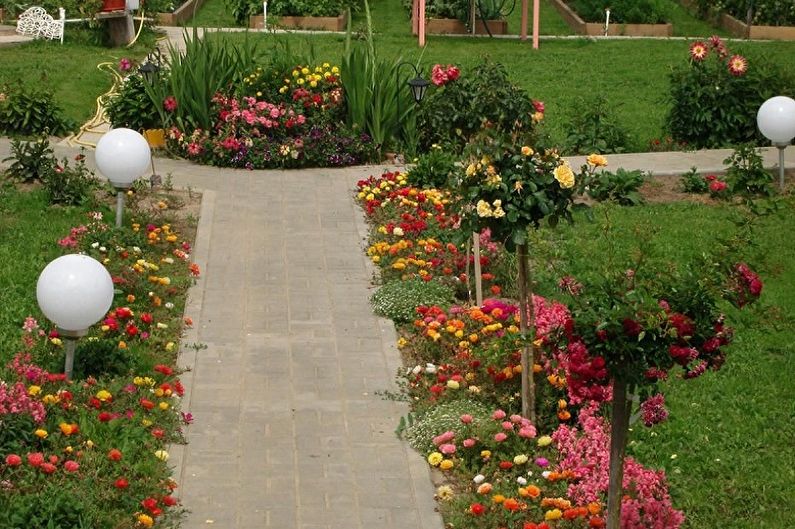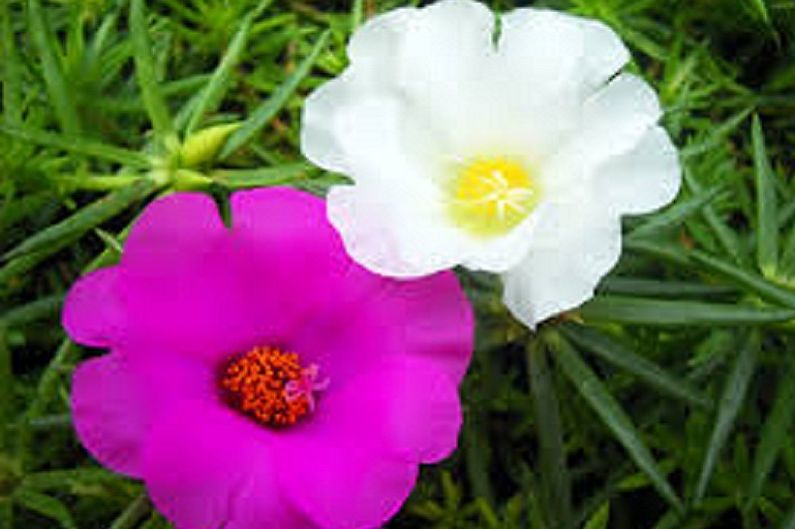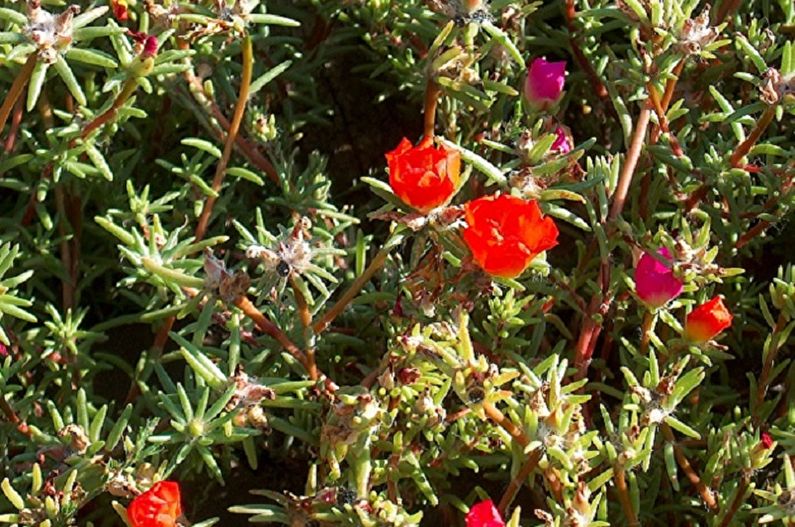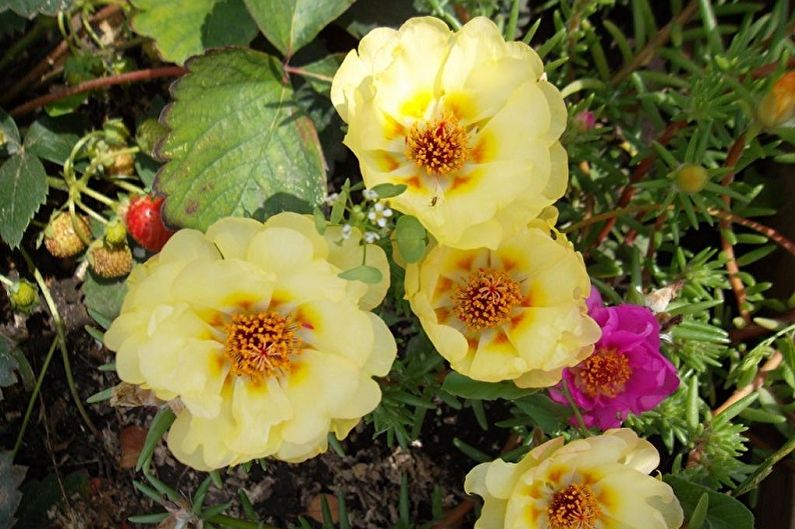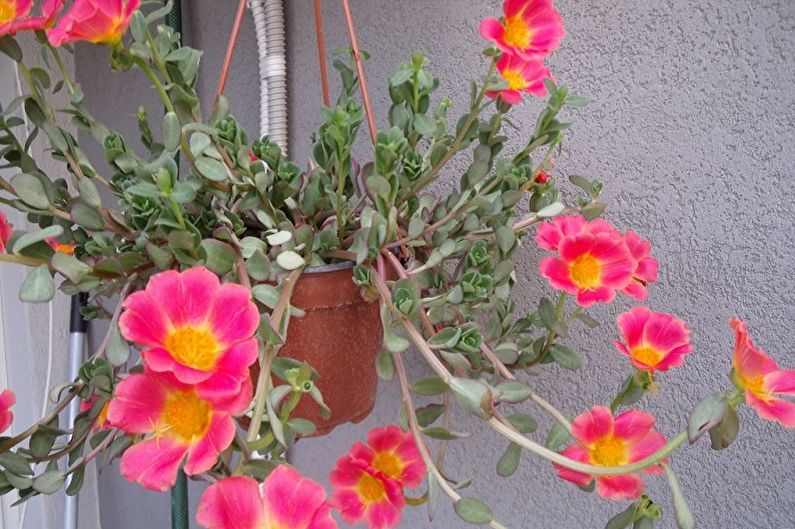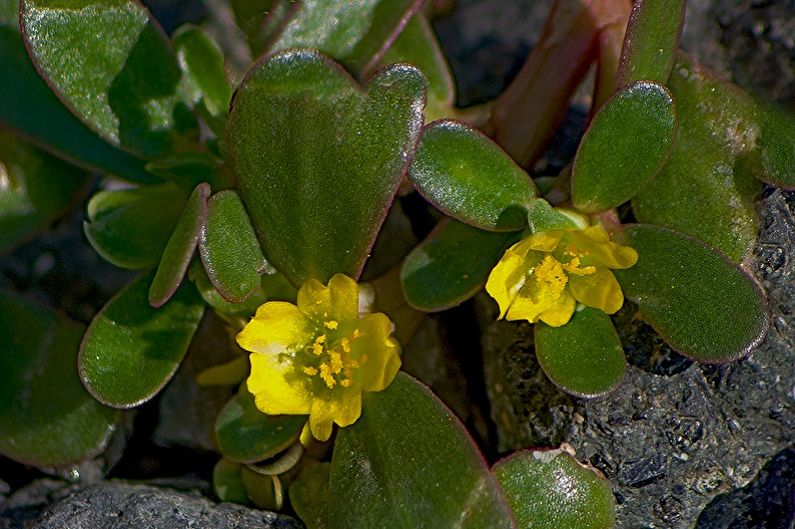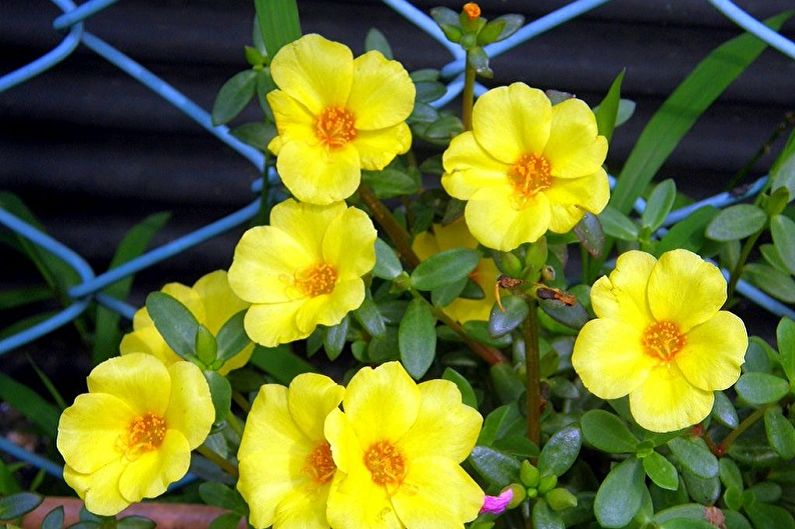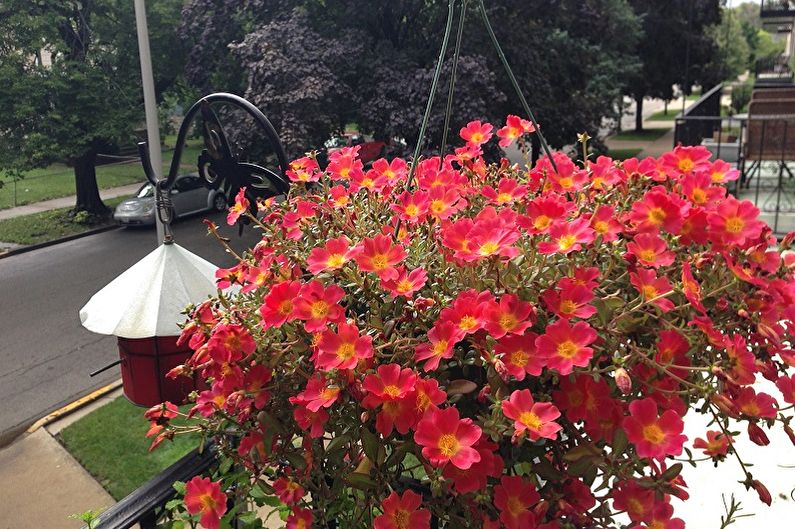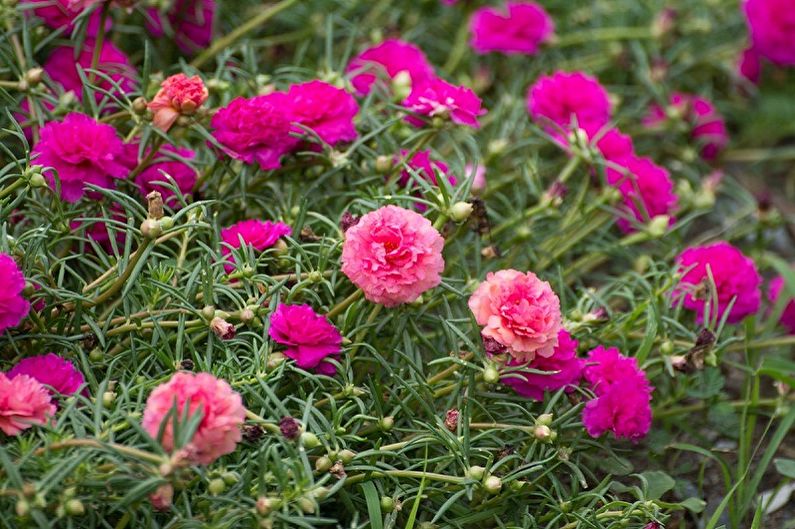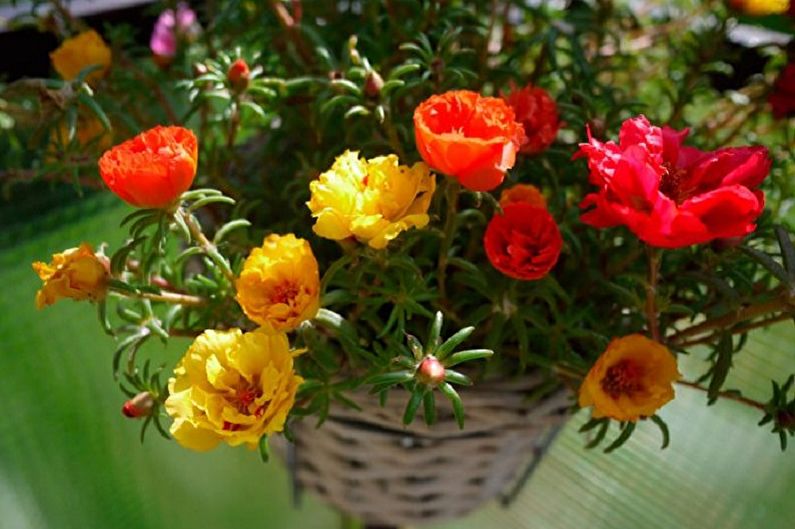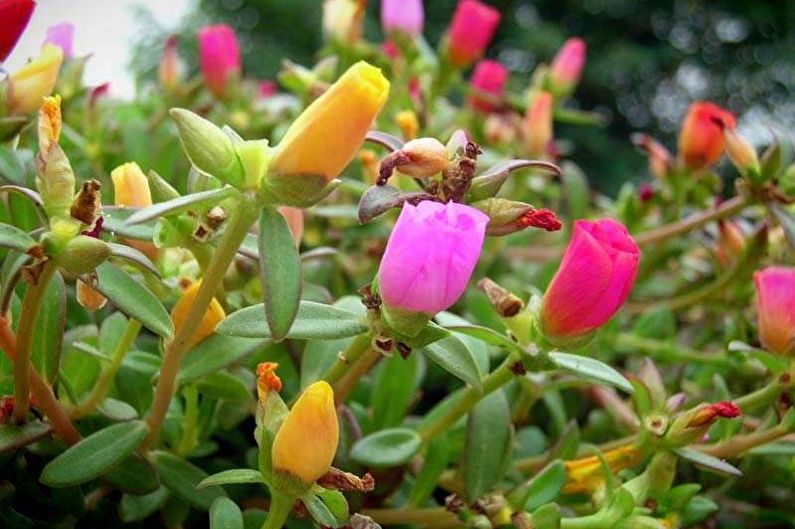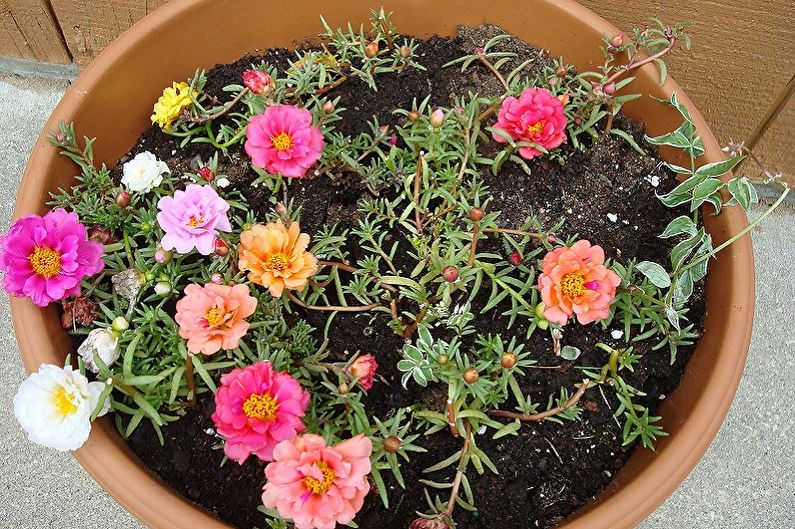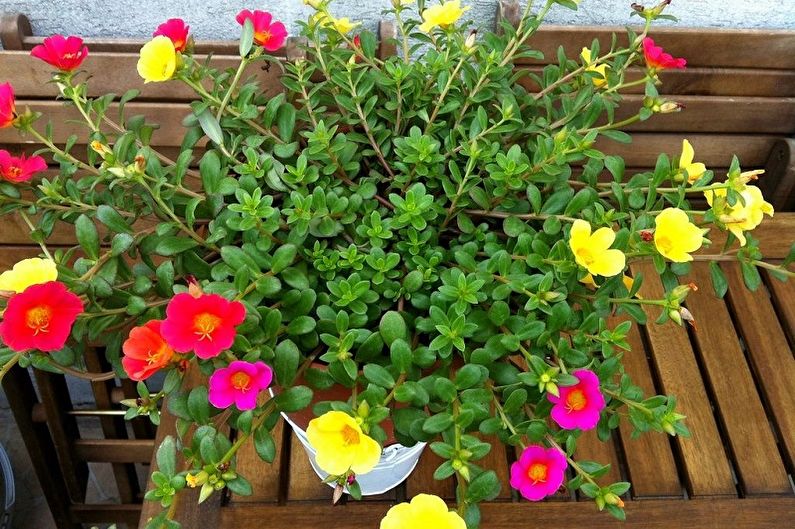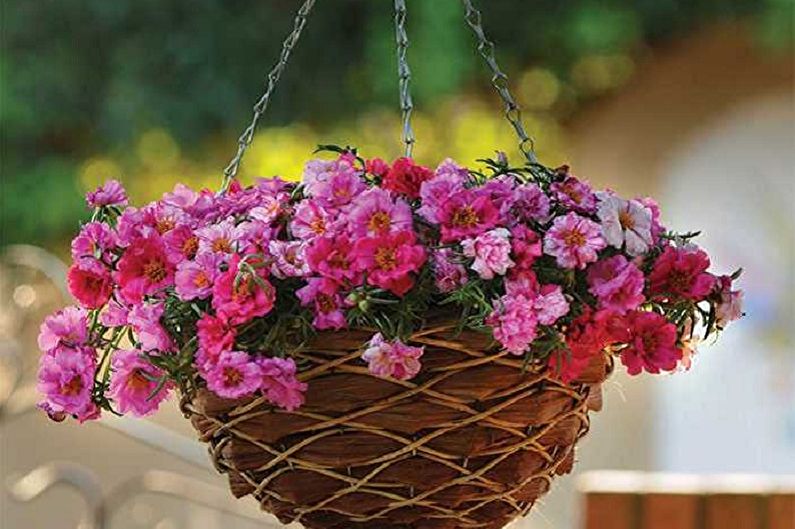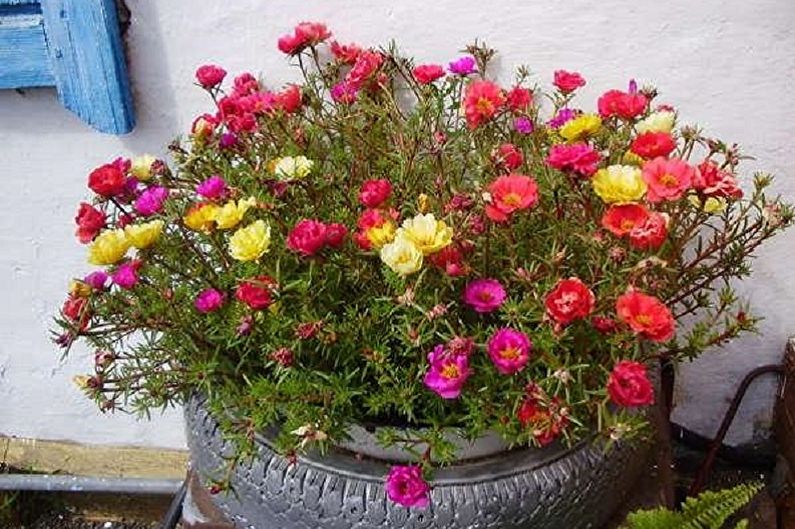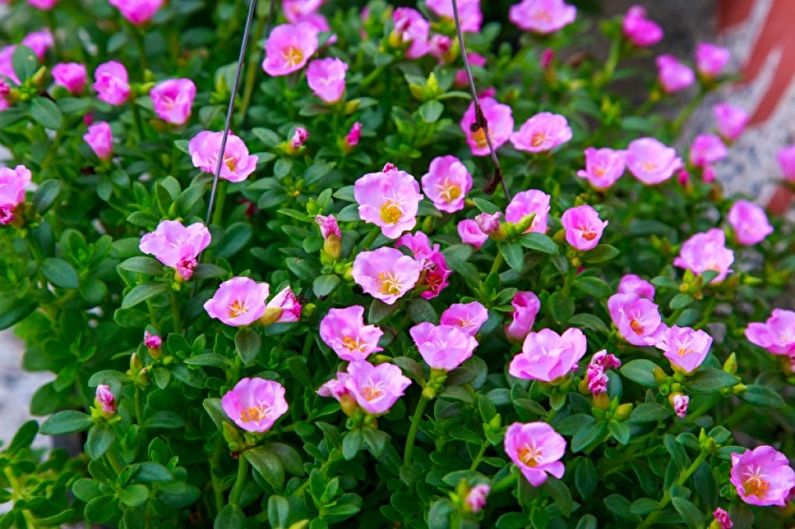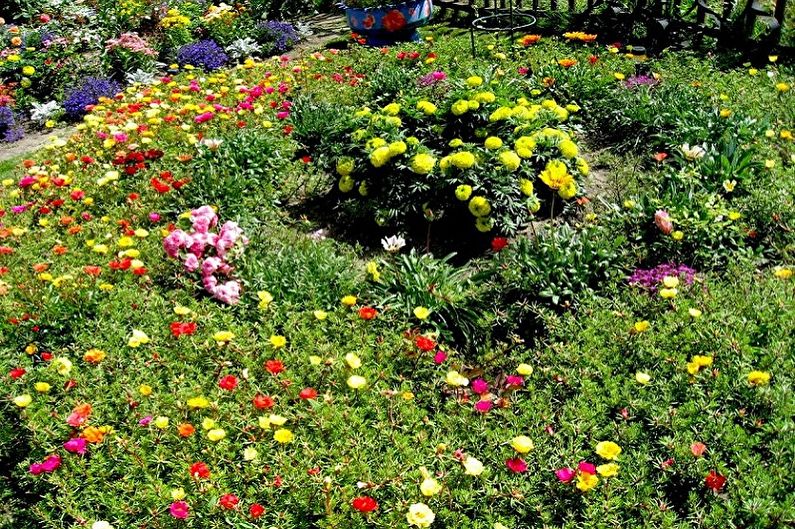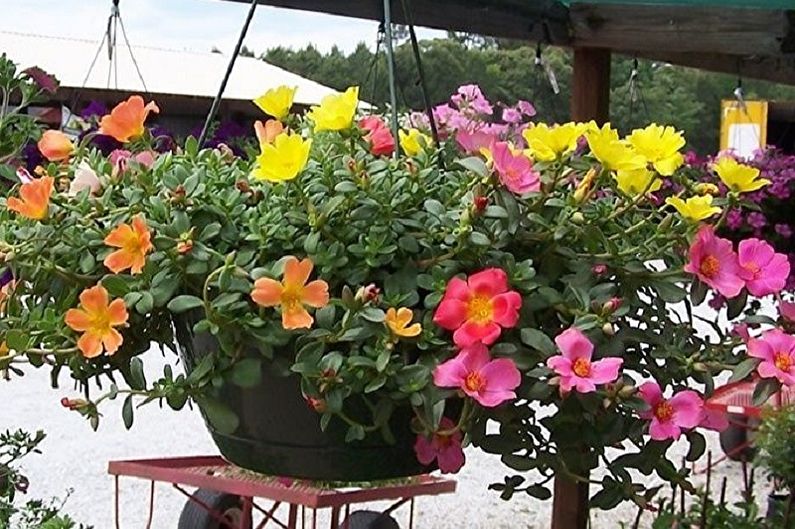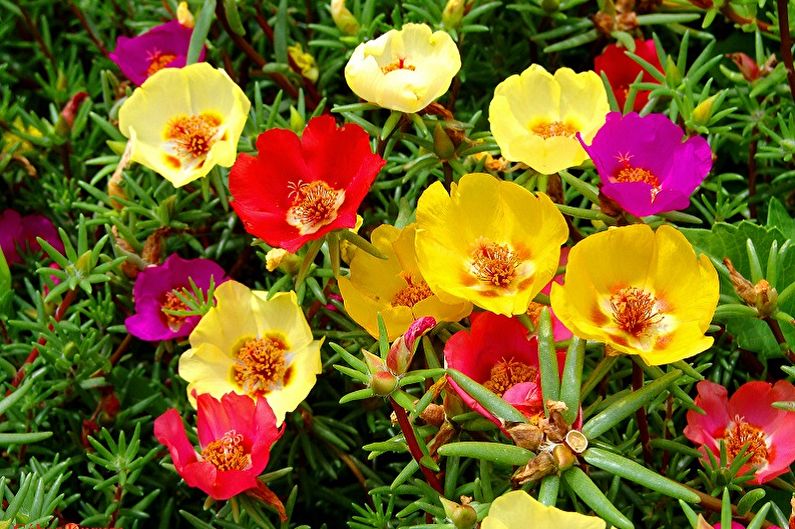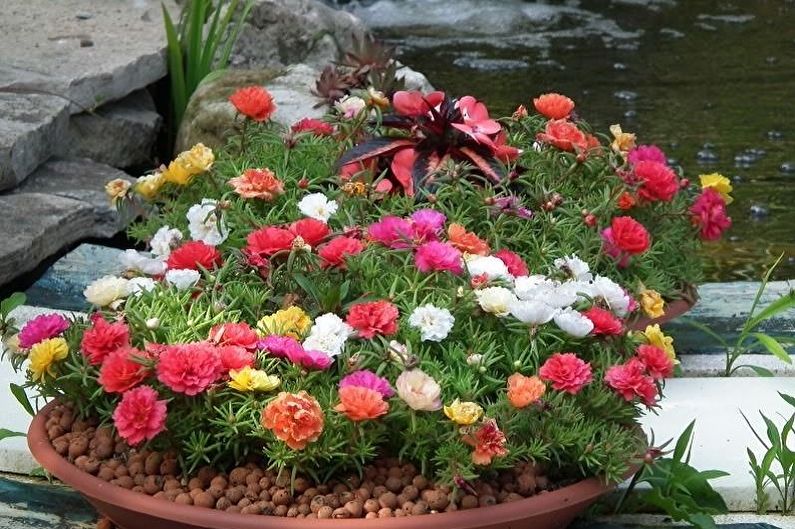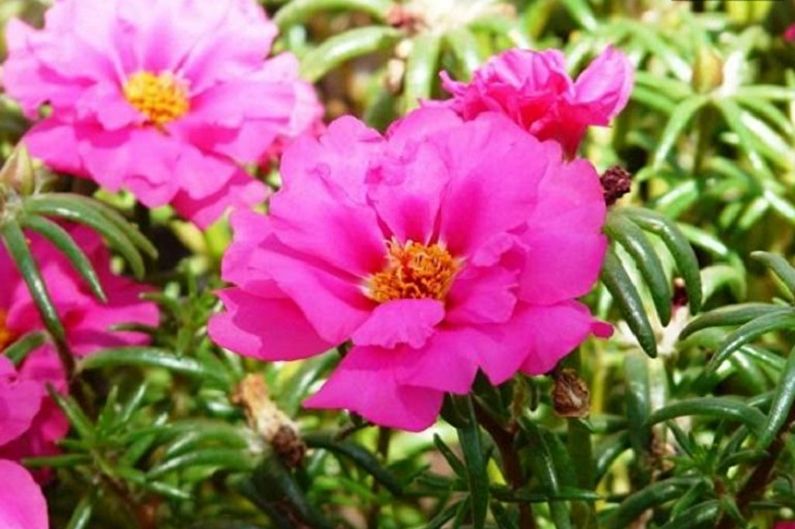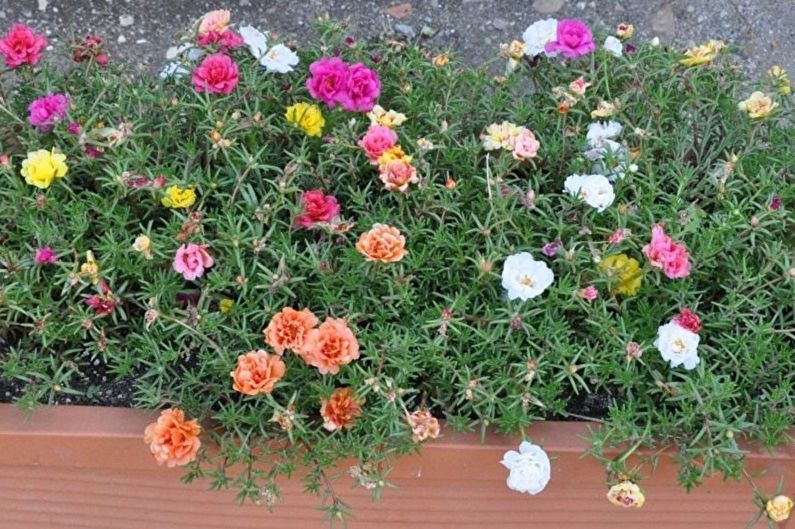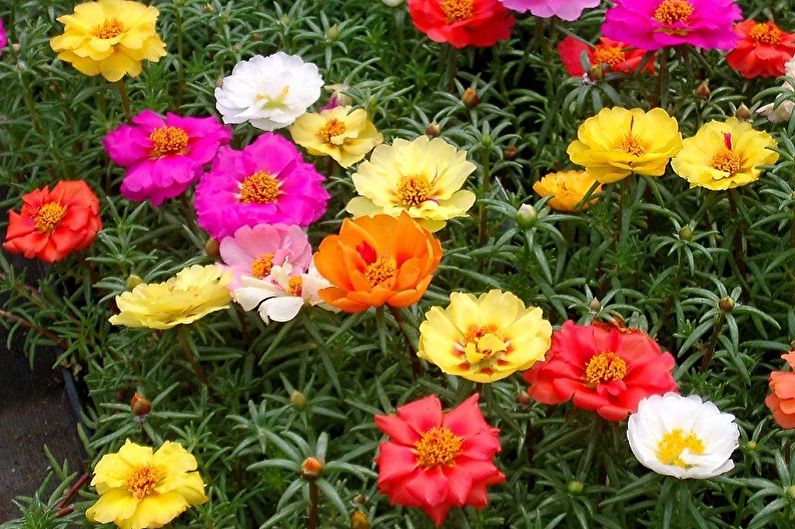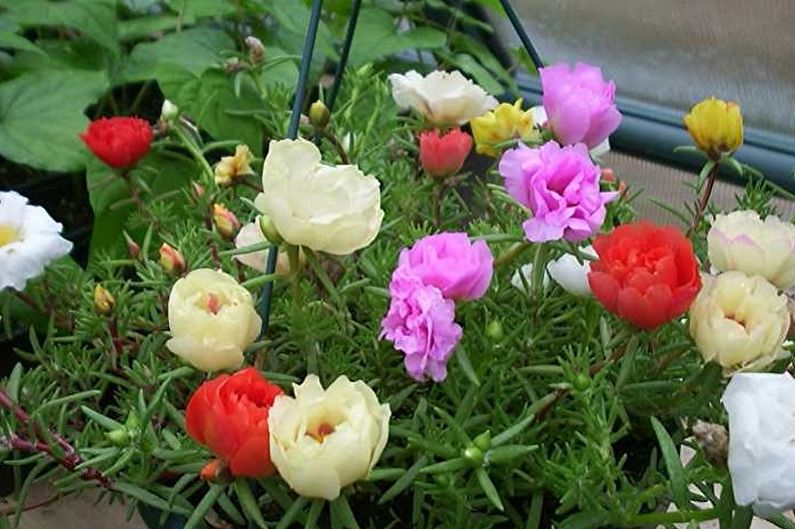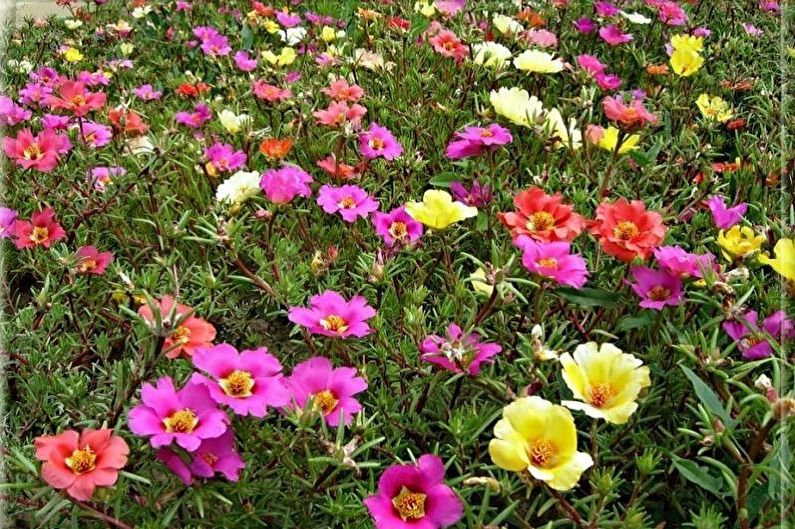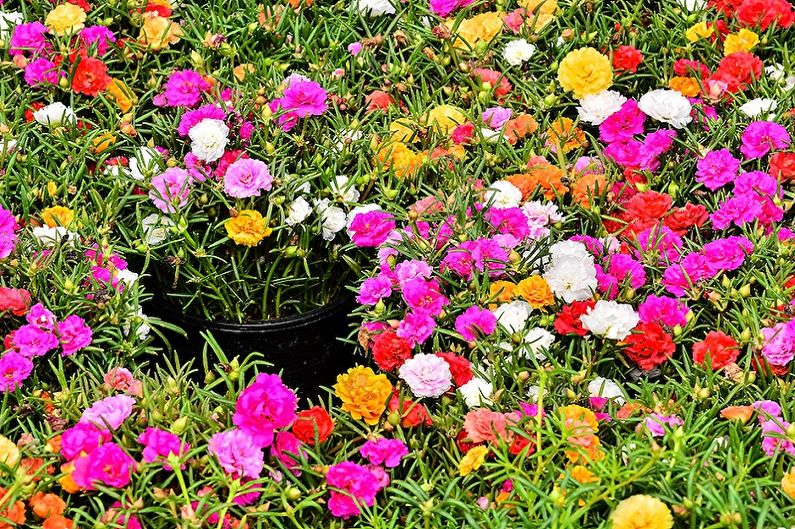
The name of this delicate exquisite flower translated from Latin means “collar”. Indeed, it is precisely this form that the mature seed box takes on, as if opening the doors to the storehouse of new material for planting. The homeland of Purslane is South America, while in European countries he won the great love of flower growers for his unpretentiousness, naive beauty of long flowering throughout the summer. But even these are not the best qualities that a plant can boast of. Some of its types have been used as medicines since the time of Hippocrates, which contribute to the healing of ailments, healing of wounds, and the removal of inflammatory processes.
The main types
In the wild, there are about two hundred varieties of purslane. However, for cultivation in household plots and apartments, two main types are used - garden and large-flowered, each of which has many varieties.
Portulak garden
This species can grow on absolutely any soil and practically does not require attention. Moreover, in some cases, it perfectly develops in spite of the unwillingness of the owners of the site, who consider it a difficult weed. Garden Purslane has a long fleshy stalk, which shoots raspberry-colored shoots reaching 60 cm. The leaves of its green color (sometimes with yellowness) are also juicy and dense, oval in shape. Flowers have an inexpressive shape, rather small, so this species does not have decorative value. The most common varieties: Macovei, Paradox, Firefly.
Its main advantage lies in the healing properties. Purslane leaves and shoots contain a large complex of useful substances: vitamins (A, E, C), proteins, carbohydrates, organic acids, mineral salts, etc. Medicines made on its basis are used to relieve inflammatory processes of the bladder, kidney disease, liver, with eye ailments. Purslane juice helps lower cholesterol and blood sugar.
The culture is also known for its use in cooking. Green juicy shoots added to various dishes give a sour, refreshing taste. Purslane is used as a component of salads, an additive to vegetable dishes, and an ingredient for gravy for meat and fish delicacies. It is pickled, salted, and harvested in dried form.

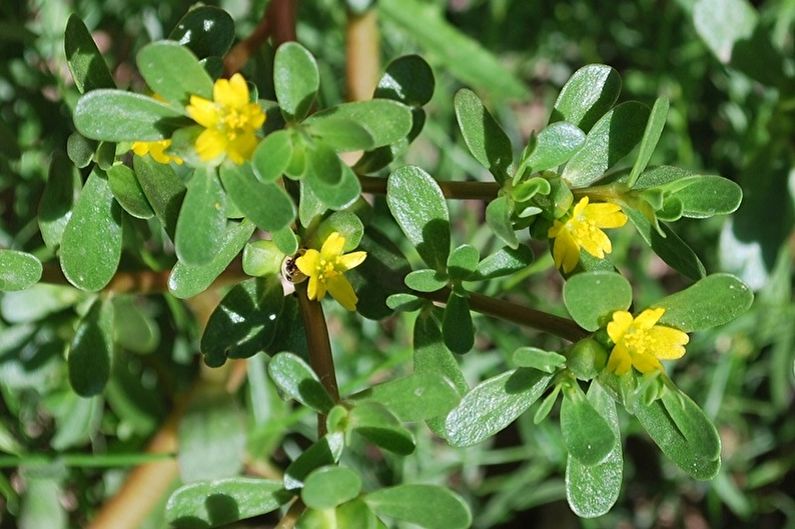
Purslane large-flowered
It is this type of purslane that is used to decorate plots, balconies, window sills of apartments. A wide variety of its varieties makes it possible to choose the necessary color palette of design or create a site that is brightly dotted with delicate, colorful flowers. The most common varieties include:
- “Scarlet” - has a small height of about 10 cm with a highly branched stem and double flowers of purple color. The flowering period lasts until October;
- “Cherry” - has cherry flowers, the diameter of which is about 5 cm;
- “Cream” - a low plant, the color of the flowers of which has an overflow from light cream at the edges of the petals to a dark one closer to the center;
- "Splendex" - has a terry pink and scarlet color;
- “Orange” - the name speaks for itself, indicating the color of flowering.
Also popular are varieties "Flamenco" and "Pun", famous for large multi-colored flowers.
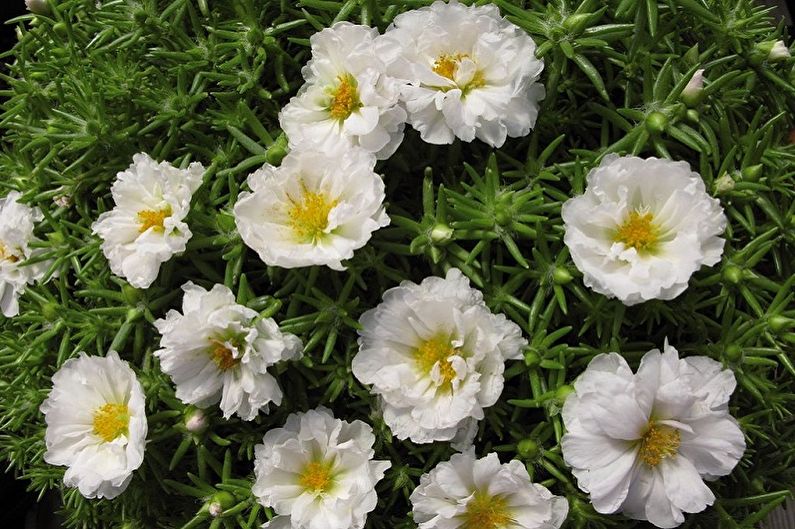
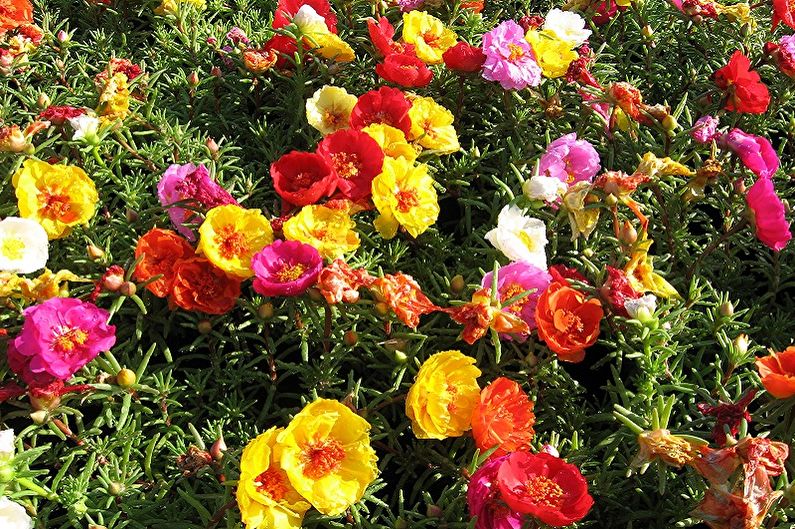
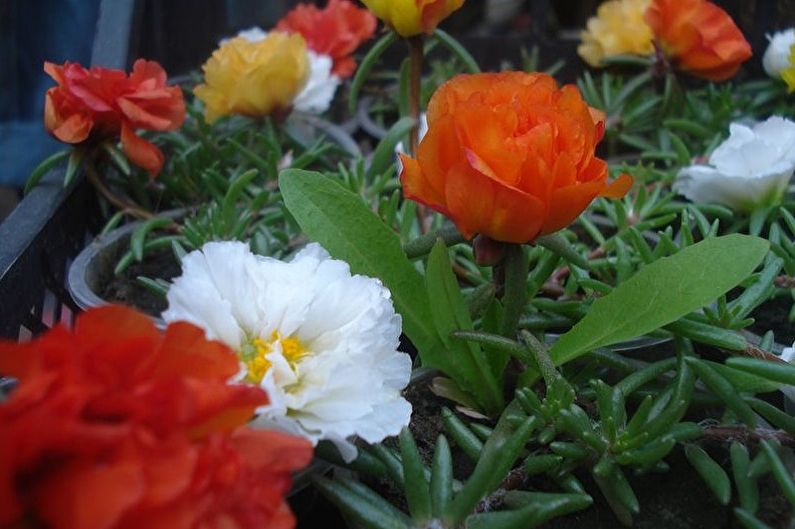
Proper Purslane Care
Although the plant does not belong to demanding ones (for which many flower growers appreciate it), nevertheless, some rules for its maintenance must be observed.To a greater extent, this applies to good lighting and special soil composition, where light, sandy, poor soil is preferred. In rich soil, purslane will gain green mass, but most likely will not bloom.
Lighting
Purslane loves good lighting - when placed in shady areas or during periods of prolonged cloudy weather, the buds open poorly, there is a danger of a complete lack of flowering. In the shade of the plant, the stem is significantly lengthened and the overall attractiveness of the flower cover is lost. But it is not afraid of direct sunlight. When choosing a place of residence for a flower in apartment conditions, the choice falls on the southern window sills, and in the summer it is better to transfer the flowerpots to a balcony or a loggia. It is also recommended that you turn the pots from time to time so that the plants grow equally.
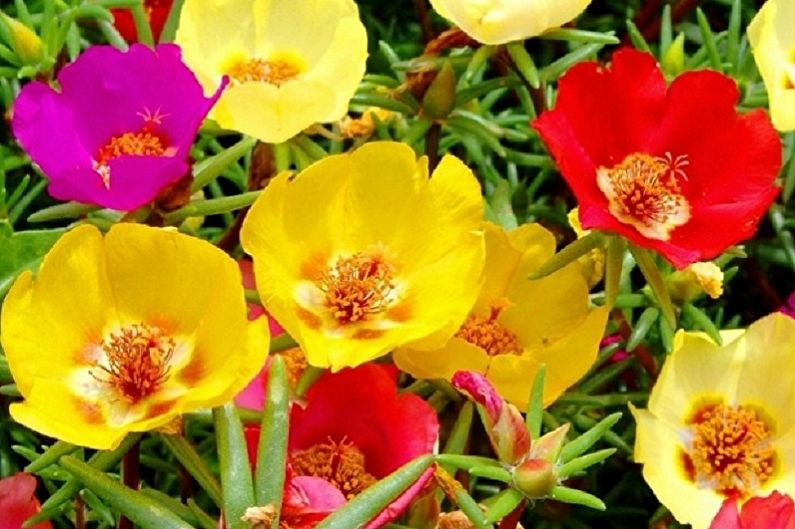
Temperature
Since Purslane is home to South America, care must be taken to ensure that it receives enough heat. The optimum temperature should be at least + 22C. The most beautiful magnificent bloom can be observed when the thermometer reaches the + 30C mark. Purslane landing is also recommended in warm weather, when the temperature does not fall below +20.
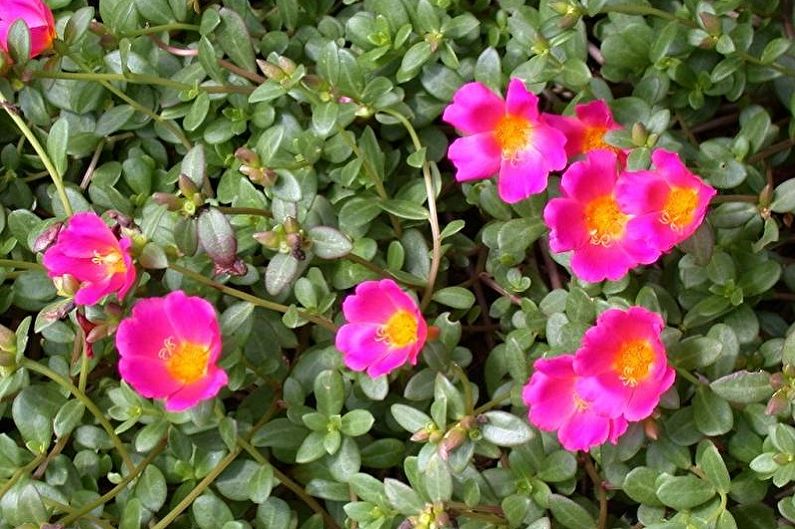
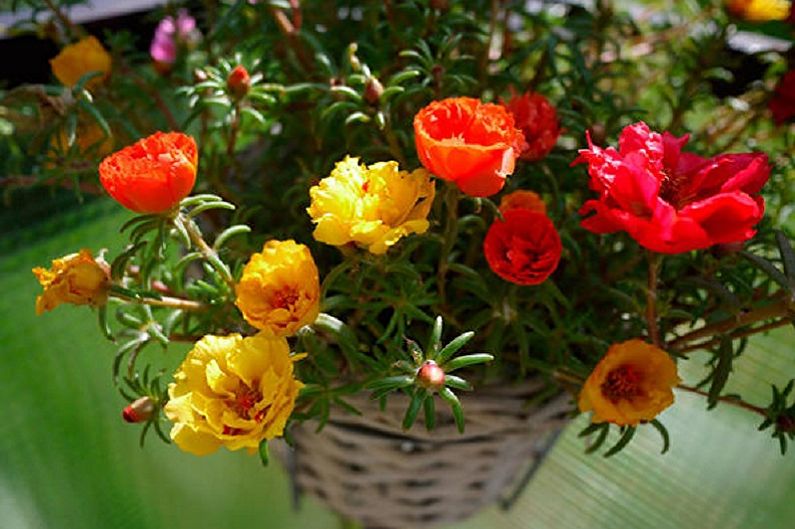
Humidity
The culture does not apply to lovers of excessive moisture - waterlogging of the soil can lead to rotting of the root system and death. Purslane does not need additional spraying, except for the period of seedling growth. At the same time, with a severe lack of moisture, the plant can begin to throw off leaves, so modest but regular moistening of the soil, necessarily equipped with drainage, is necessary (especially for indoor species). In rainy summers, watering is applied as needed.
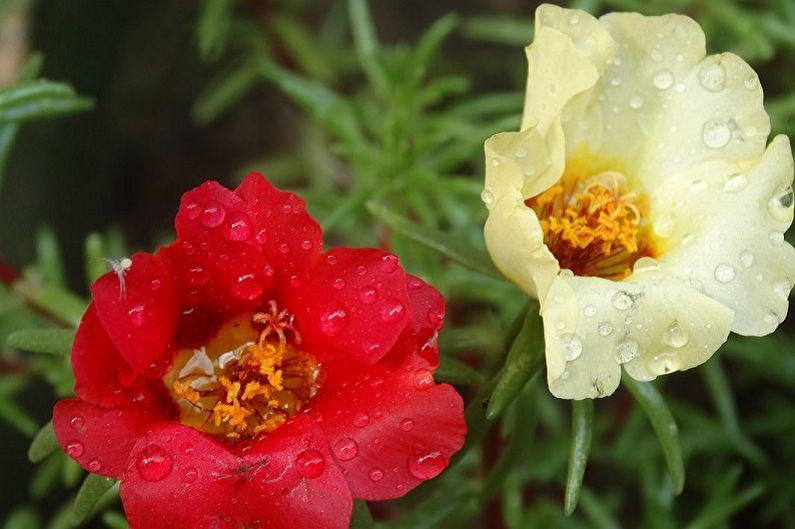
Watering
Purslane must be carefully watered both during planting and throughout its growth. Then the amount of recharge is reduced, as the growing fleshy leaves have the ability to accumulate water. An adult flower is enough to water once a week. In this case, you need to loosen the earth to provide the roots with a sufficient amount of oxygen. In particularly dry periods, the frequency of irrigation increases to 1 time in 3-4 days. House representatives can be without moisture for a very long time.
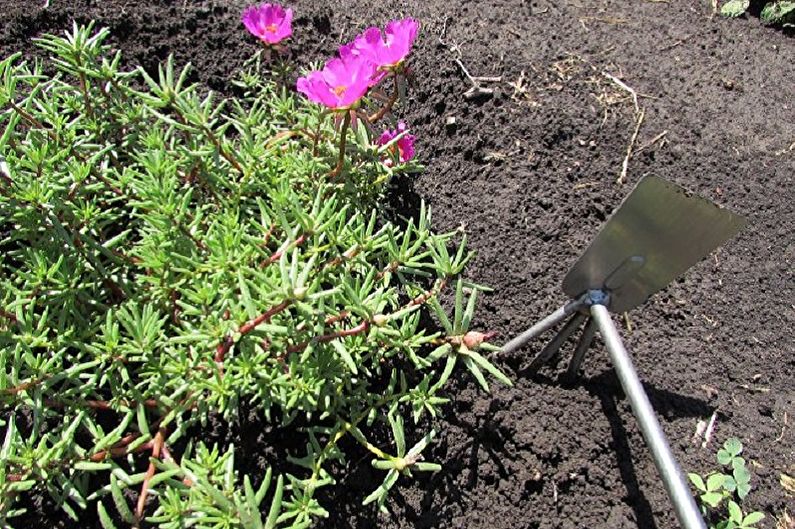

Fertilizers and fertilizing
An adult purslane does not need to be fed. The main thing is to provide him with suitable soil. The most favorable will be sandy soil with no peat. If the soil is heavy - it can be fertilized with charcoal.
Increased attention is paid to seedlings - they are fed twice. The first feeding should be two weeks after the dive with nitrogen fertilizers. The second - is introduced shortly before planting a plant in open ground. In this case, it is necessary to apply complex compositions with a high content of potassium and phosphorus.
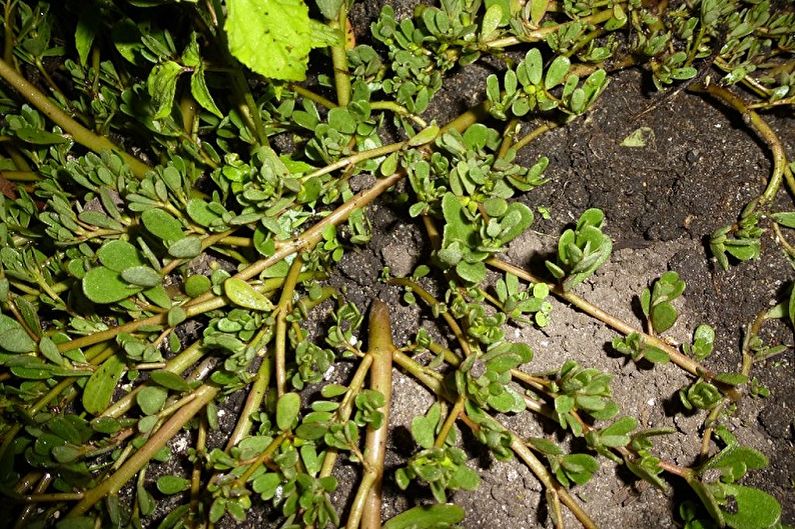
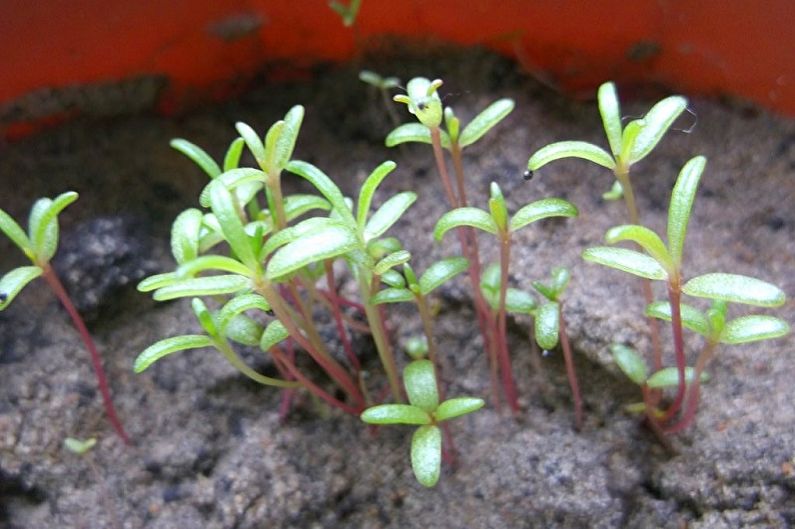
Pests and diseases
Purslane extremely rarely suffers from ailments, but they can still overtake the plant under adverse conditions. The fungus is especially dangerous, the signs of which are spots on the leaves, damaged shoots. Infected portulaca must be removed, and the remaining vegetative system treated with a fungicidal preparation containing copper.
The main pest of the crop is the aphid, which attacks shoots during flowering. Insecticidal solutions help to cope with it. Also thrips eating plant juice are dangerous. Their presence is characterized by the appearance of silver droplets on the leaves and wilting. Be sure to require insecticide treatment.
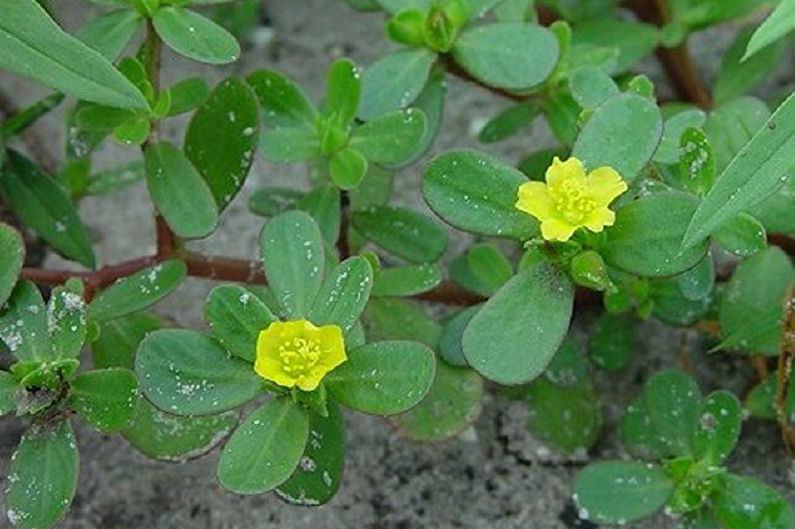
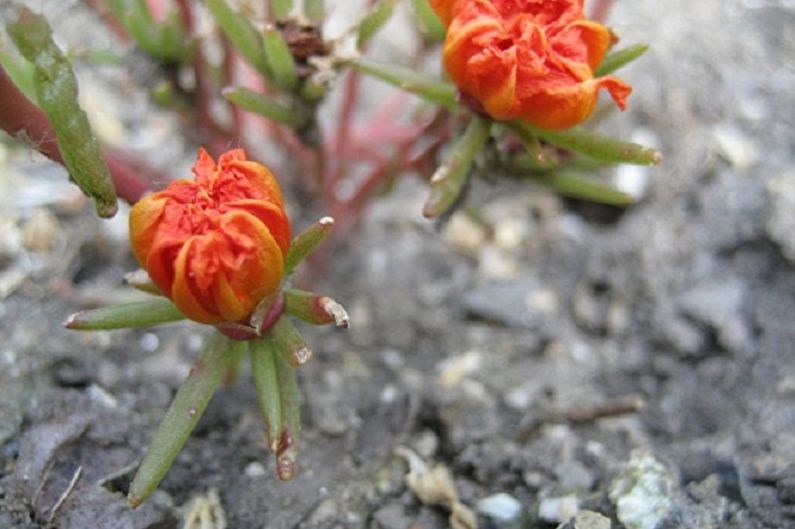
How to transplant a purslane
Purslane tolerates transplant excellent. Thus, you can plant a young plant or transplant a part of an adult culture, separating a part with a shovel along with a rhizome. It is necessary to provide a suitable light, loose, sandy soil, sunny territory. It is better to transplant it in the warm season - at the end of spring.In cool conditions, when the temperature fluctuates within + 10C, the purslane may not take root, the leaves will begin to fall.
Bushes are located at a distance of 15–20 cm from each other. The first days it is necessary to provide daily watering, especially during drought.
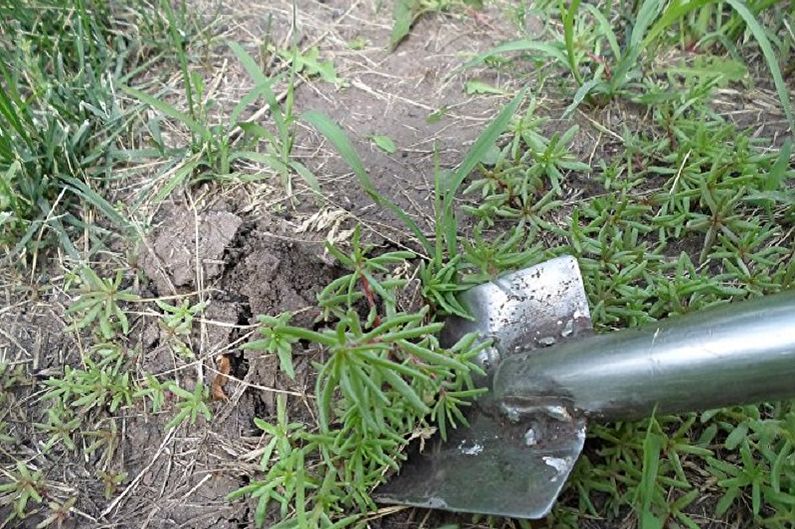
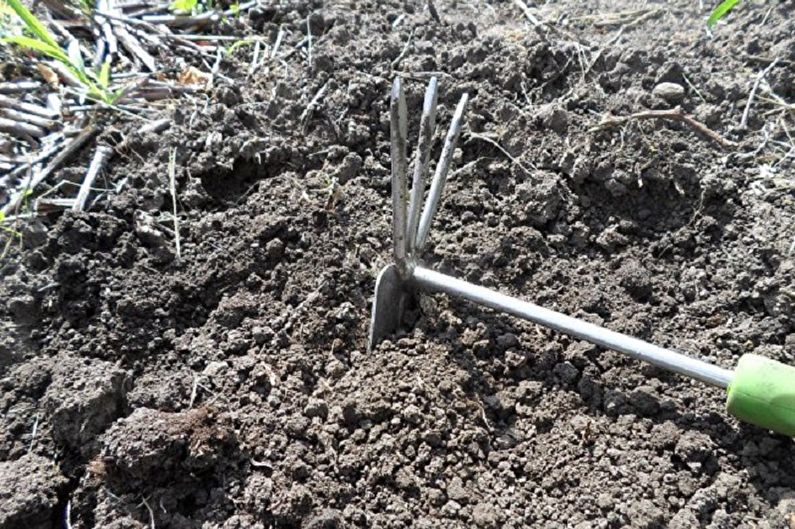
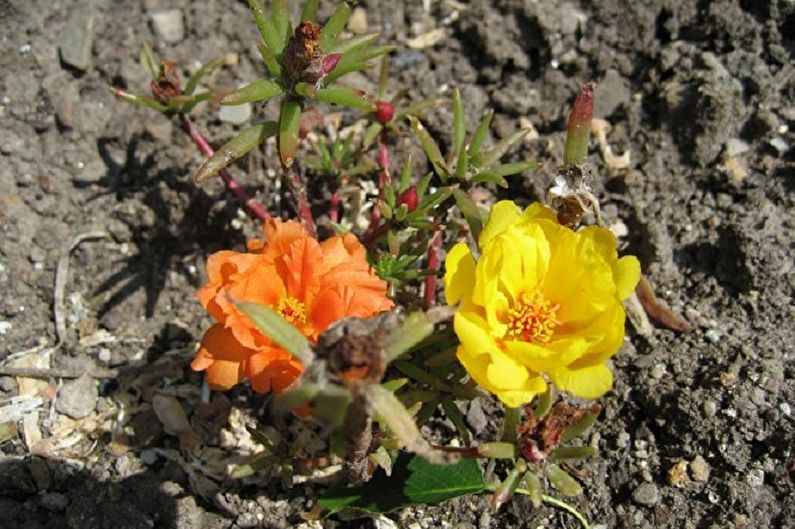
Propagation at home
In nature, purslane easily propagates by self-sowing; therefore, in many European countries it grows like a field weed. At home, the most common way of propagating it is considered to be seedlings by sowing seeds. You can also increase the number of your favorite species by cuttings, but this method is preferable for areas located in warm climatic conditions.
Purslane propagation by seeds
As mentioned earlier, the seeds are located in small boxes, which open when ripe. Since some seeds can ripen a little faster than others, it is better to collect the material in advance, not leading to over-ripening, since seedlings can not wait. Harvested seeds are laid out on ripening paper. An easier and more reliable way for beginners is to buy planting material.
Sowing is carried out in late February - early March. To do this, you need a tank with sandy soil and a thick layer of drainage. Seeds are poured onto the surface without deepening or sprinkling with earth. Cover the container with glass or film and set in a warm place, preferably in the sun. The optimum temperature should not fall below + 20C. Every day, you need to open the greenhouse and spray the seeds with a spray bottle. After the purslane sprouts have reached a height of at least 5 cm and 8–10 new full-fledged leaves have appeared, they can be transplanted into pots or flower pots. Landing in open ground is recommended not earlier than the end of May.
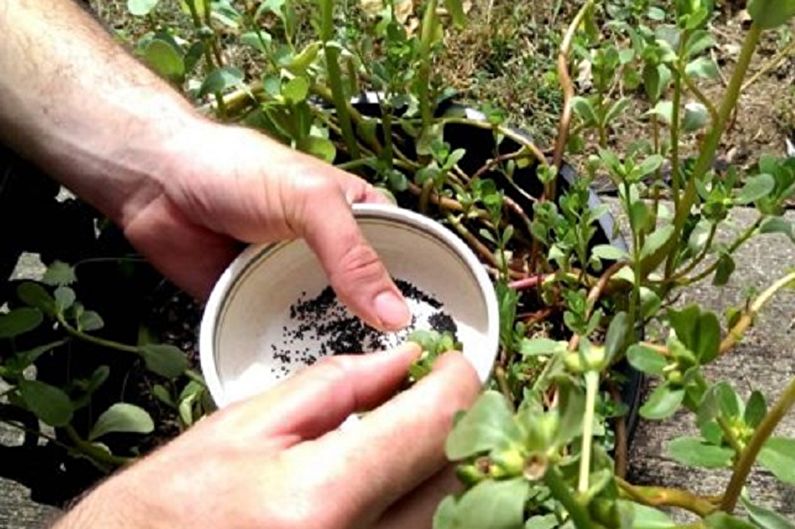
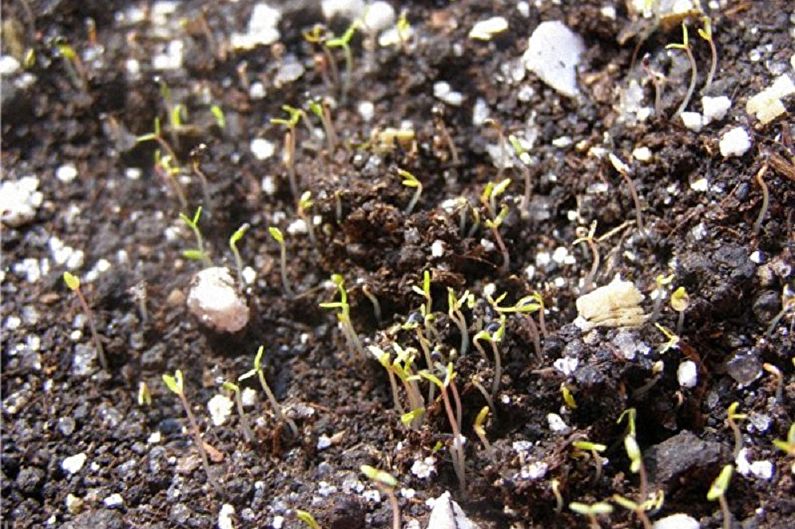
Purslane propagation by cuttings
To propagate the purslane by cuttings, it is necessary to cut branches from an adult bush in the spring. It is better to additionally treat them with a stimulating solution. Next, the branches are planted in a prepared container with a loose substrate for rooting. Often it is also covered with a glass lid to create a favorable microclimate. The first sign of rooting is the appearance on the cuttings of new leaves. After 2-3 weeks, the purslane can be moved to a permanent place.
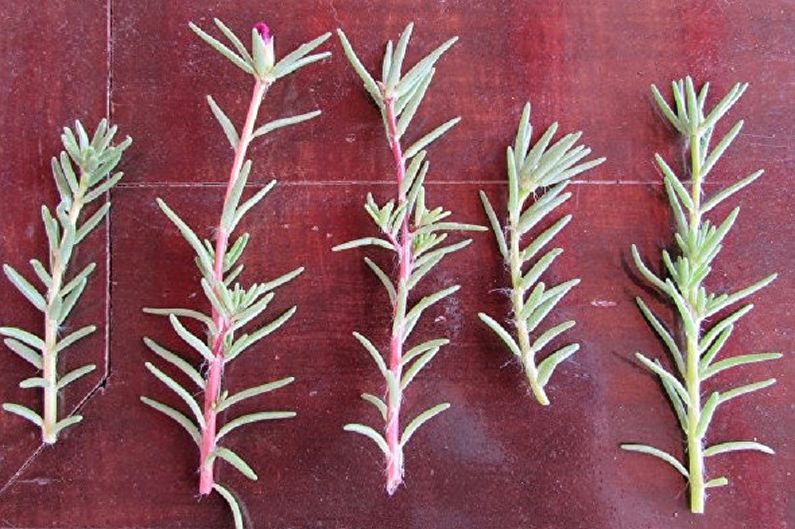
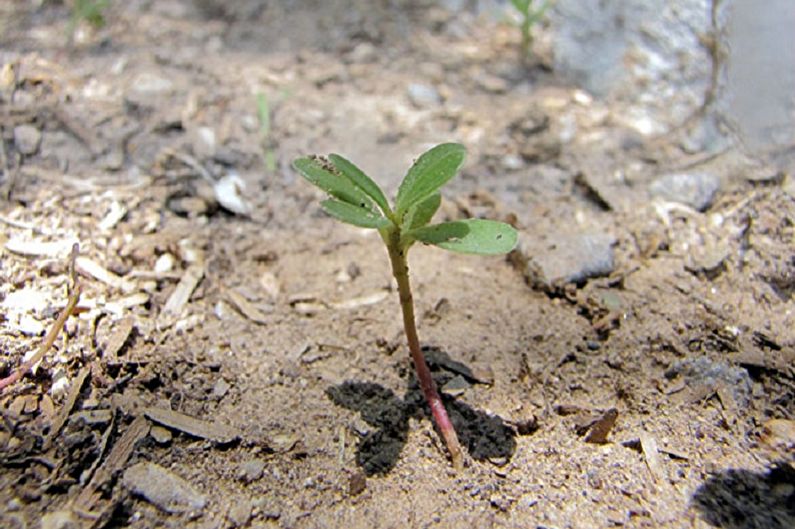
Purslane - photo
Due to its unpretentiousness and ability to take root on any soil, purslane is widely used in landscape design. With its help, you can form a whole flower carpet, decorate a rockery, an alpine hill, add a colorful flower garden, or significantly transform a balcony or a loggia. All the richness of the colorful variety of the plant can be seen in our photo gallery, which also presents various ways of planting it. Enjoy watching!
